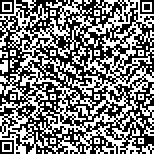下载中心
优秀审稿专家
优秀论文
相关链接
摘要

地表二向性反射分布函数(BRDF)是表征地物反射随太阳和观测方向变化的物理量.在统计意义上, BRDF表示均值统计量,BRVF(Bidirectional Reflectance Variance Function)表示方差统计量,它们对研究地表各向异性反射特征有着重要意义.本文首先采用误差传播理论,推导出基于MODIS BRDF模型的BRVF表达形式.研究结果表明,BRVF的空间分布模式主要由几何光学核Kgeo和体散射核Kvol的一次项和二次项权重和决定. 然后利用EOS地面验证核心站点(EOS Land Validation Core Sites)的MODIS BRDF产品,对BRVF空间分布模式随地表类型、光谱波段和观测角度范围进行验证.验证结果表明,基于MODIS BRDF产品的验证与理论推导有较好的一致性.BRVF空间分布模式和地表类型有关,通常在热点处有一个峰值.在大观测天顶角(> 60°)下,BRVF随着角度的增大而增大.BRVF在近红外波段整体上大于红波段,表明其波段依赖性.最后,将上述理论成果初步应用于69组地表测量数据的模拟中.模拟结果表明,当大角度缺少观测数据时,模型外延所引起的方向反射方差显著增大,对地表反照率的反演精度和不确定性有较大影响.其中,红波段的白天空反照率的相对误差最大可达38.26%.本研究对利用小角度观测数据进行地表反照率反演的不确定性分析有指导意义;对大角度观测数据缺失情况下,先验知识在地表反照率的反演应用可提供有意义的理论支撑.
The Bidirectional Reflectance Distribution Function (BRDF) qualifies variations in reflectance patterns as a function of illumination and viewing geometry. Statistically, directional reflectance in a given direction is considered as the mean. The variation in that direction can then be characterized by its variance. The BRVF is a useful method for characterizing reflectance anisotropy.In this study, we first explored the variance in bidirectional reflectance through the use of not only a BRVF technique based on the MODIS BRDF model but also an error propagation method. Then, we performed a method validation by using the MODIS BRDF/Albedo product from selected EOS Land Validation Core sites (LVCS) with underlying typical IGBP land cover types and NDVI threshold. Finally, as an initial application of the BRVF, we applied the aforementioned theoretical results in the simulation result derived from the collected 69 field measurements.Major results demonstrate that the spatial distribution patterns of the BRVF are linear combinations of the first-degree term and the second-degree term of geometric optical kernels (i.e., Kgeo) and volumetric scattering kernels (i.e., Kvol). Validation results based on the MODIS BRDF/Albedo product are consistent with the theoretical derivations. In general, the BRVF spatial distribution pattern reaches its peak value at the hotspot direction. Beyond the large viewing angle (VZA >60°), the BRVF tends to increase along with the increase in VZA. The BRVF value in the near-infrared band is greater than that in the red band, thereby indicating that for the MODIS sensor, the BRVF is a band-dependent variable. The initial application of the BRVF to the simulation result derived from the collected 69 field measurements shows that at a large VZA where observations are not available, the model-extrapolated BRVF value increases prominently, thereby affecting the accuracy of surface albedo retrievals. The maximum relative error for the white sky albedo retrieval in the red band is about 38.26%.This study is very helpful in understanding the uncertainty of surface albedo retrieved by a narrow VZA sensor. The results are also necessary in understanding a priori knowledge applications for the retrieval of surface albedo and other biophysical parameters.

